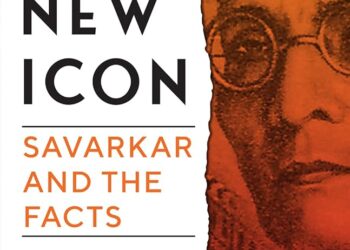The Modern Rationalist
Annual Number 2020
Pages : 180 Price : 300/-
Periyar Book House
84/1, (50), E.V.K. Sampath Road,
Vepery, Chennai – 600 007.
Palani. Arangasamy
It has ever been the customary practice of the Fourth Estate to release Souvenirs, Festschrift and special Issues to celebrate rare events and remarkable occasions. One such is the Annual Number of The Modern Rationalist to coincide with the 88th Birthday of Asiriyar Dr. K. Veeramani and to highlight the need for social Justice which he has been championing ever since he entered into public life. The Annual Number 2020 is compiled on the theme: ‘Journey of Social Justice – A Hurdle Race inspite of Constitutional Protection’.
This profusely illustrated multi – colour volume contains a lot of informative profiles. In about six articles on Asiriyar with each one highlighting his distinguishing feature – as a writer, scholar, speaker and above all, a humanist of international outlook. Each account has not swerved into mere adoration but plain, factual and even picturesque when recollecting events and incidents such as the one by Dr. Soma Ilangovan and another by Mr. Olivannan. The one by all India Civil Service official – turned cine – director throws light on the amiable qualities of the Asiriyar in a different context. Homage on James Randi, the Canada born skeptic who passed away recently proved the efficacy of scientific rationalism and exposed the emptiness of magic, clairvoyance and even medical quackery. In a way, Randi and Abraham Kovoor are alike. We in India need many more Randis when powers that are, foolishly attempting to introduce Astrology as an academic subject to be taught.
As regards the fag-end essay on Reservation is a means to equality, the argument for communal reservation in it is okay but to bring in a holistic societal equality, more than reservation, factors such as inter–caste marriages, removal of disparities in educational opportunities and economic uplift are equally essential. Strictly speaking, one wonders whether absolute equality has ever been achieved either in socialistic or in communist countries. True it is that to attain a typical idealistic equality, the society has to march ahead on a long, long road. Woman Self Improvement is a typical guideline for super–annuated women professionals. Restrictions on girl children in India is lamented by the contributor. She being an NRI may attempt a comparison with liberality extended to young girls in USA and decide which is meritorious. Gail Omvedt may be right in stating that the Satyashodak Samaj of Maharashtra is earlier to Dravidar Kazhagam (DK) but how to accept her opinion that DK has alienated the Dalits (the oppressed)? A few offshoots of Dalits in Tamil Nadu do not indicate that they have been distanced. The DK was the first movement that struggled hard to uplift Dalits much against the vociferous and tacit opposition of communalists and till date, it has been championing their rights and liberties. The DK has kept its doors open as usual for dalits and hundred thousands of them are still in its rank and file. A few sadistic may plough a lonely furrow but that is negligible.
In about twelve essays on Social Justice, the one that analyses it in Indian perspective, is optimistic in achieving justice to Sudras and Panchamas despite the fact that it is a gradual ongoing process for attaining a desired goal. There are hurdles, the road to social justice is still a thorny passage that needs many more Periyars and Ambedkars. How far it is a casualty in spite of a High Court order in the issue of all–India quota in the Academic Institutions is explained by Mr. Wilson. An essay by the Vice–Chancellor from Dumka, Jharkand is richly informative. She analyses the problem by applying the use of negation as failure method of computational science in defining social justice. She is right in pleading for the Bahujan Collective to make our ideals into practice.
A very well–prepared essay by Kannabiran Ravishankar tacitly points out that to attain social justice, we have to go back to the people from whom comes the power. One is reminded of what Mae–Tse Tung once said that power comes out of the barrel of the gun. But our traditional way is to achieve everything by non–violent means and so is this, in the sphere of social transformation among the people also. Continuous propagation is also commended by him as a step towards achieving social justice.
An article by the Vice–President of the DK is eye–opener to the moderates and compromisers with the Centre at Delhi. A glance at the Department wise number of officials is terribly shocking because of Brahminical hegemony to the core. Is there a way out except eliminating the saffron–outfit lock, stock and barrel to wipe out this monopoly of the cross – belts?
Homages paid on financial wizard Mr. Rajaratnam by his learned colleagues throw light on his illustrious career. An inspiring and reminiscent note by Dr. Veeramani on Ram Vilas Paswan bear adequate testimony to the love and affection he bears to that stalwart of Dalits in Bihar. Homage on him not only strikes a lovable note of personal touch but also brings out nobility and humanism of the leader from Bihar.
A few articles on pandemic Covid–19 prove to be informative in tracing its origin, its infection across the world and effective treatment accorded by Periyar Medical Mission in Chennai.
This Annual Number of the year 2020 is a veritable record of matters pertaining to the services of great social reformers and on issues of contemporary importance. This volume on essential men and matters is worthy of being read and be kept in shelves for reference in the days to come.






